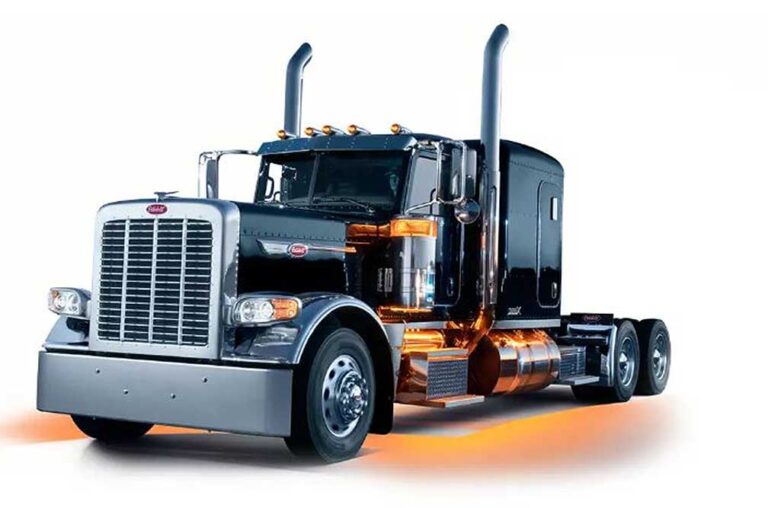December U.S. sales of new Class 8 trucks continued the trend of decline compared to last year, according to data received from Wards Intelligence. December sales of 23,390 trucks topped November’s 19,027 by 22.9% — but that’s expected every December as buyers close out their books for the fourth quarter and the year.
The telling news in the statistics is that truck sales have been lower than their corresponding month in 2022 for five consecutive months, with the gap widening each month. August 2023 sales were only 1% lower than August 2022 sales, but September sales were 3.2% lower than September 2022. October was 6.3% lower, then a drop to 17.5% lower in November. December sales were 19.9% lower than December of 2022.
For perspective, 2023 year-to-date sales were actually 34.1% ahead of 2022 sales at the end of February, with that percentage falling every month to end the year at only 4.6% ahead of 2022 sales.
In its latest North America commercial vehicle forecast, ACT Research reported the market may be facing an “inventory surge” in the first quarter of 2024.
“Something we marveled at, as late as this September, was the close correlation between build and sales that had kept Class 8 inventory levels … near perfectly positioned very late into the cycle,” said Kenny Vieth, ACT’s president and senior analyst. “If there is a silver lining, we assume that much of the end-of-2023 inventory build occurred in California because of expensive and complex CARB regulations that went into effect in January.’
Lower sales and higher inventories might be bad news for truck manufacturers and dealers, but they’re good news for the trucking industry in general. The current state of the market is that there are too many trucks hauling too little freight, holding freight rates down for everyone. With record numbers of carrier closings being reported by the FMCSA, the freight market is poised for a move into a growth cycle.
More inventory usually means better bargaining positions for buyers, too. That’s true on the used Class 8 market as well. ACT’s State of the Industry: U.S. Classes 3-8 Used Trucks report summarized that there are 7% more available trucks on the used market for North America, with the average reported price of used trucks sold declining 28% since the same point of 2022. Despite the lower average price, the average odometer reading of sold used trucks dropped by 1% and the average age by 3%.
“Look for sales to slow in January, especially with the bitter cold some of trucking’s hot spots are experiencing,” said Steve Tam, ACT’s vice president. For buyers, slower sales will result in more inventory and potentially better pricing.
New Class 8 orders fell in December by 15,000 units in the North American market, according to ACT. Despite the increase in sales of new Class 8 trucks, orders for more of them fell by 7% year over year as the trucking industry adjusted to the current market.
Everyone has their favorite truck brand, and Wards’ December report completed the 2023 picture of how each OEM did compared to 2022.
Freightliner led the way again, reporting U.S. sales of 96,726 for the year and topping all other manufacturers. December wasn’t a good month, however, as sales of 7,718 were 27.6% lower than December 2022 sales of 10,660. The company finished 2023 just 153 trucks ahead of 2022 numbers for an increase of 0.2%. Freightliner also lost market share in 2023, finishing the year with 36.3% of total Class 8 sales compared to 37.9% in 2022.
Freightliner-owned Western Star was at the other end of the sales spectrum, claiming just 3.1% of the U.S. Class 8 market with sales of 8,334 in 2023. On a percentage basis, Western Star sold 28% more trucks in 2023 than in 2022, growing its total market share by 0.6%.
Together, the Daimler-owned truck builders took 39.4% of the U.S. Class 8 market in 2023.
The next largest chunk of the U.S. Class 8 market went to the PACCAR companies. Kenworth finished the year with sales of 39,269, a 6.9% increase over 2022 sales. Peterbilt sold 39,726 trucks for a 2.4% gain. Kenworth gained 0.3% of the market while Peterbilt lost the same percentage. The end result is that the PACCAR companies together were responsible for 29.7% of new Class 8 sales in 2023, the same percentage held in 2022.
When it comes to market share, International showed the largest sales growth on a percentage basis. International sales of 37,200 Class 8 trucks puts the company in fourth place among OEMS but represents an increase of 16.5% over 2022 sales. The builder seems to be doing much better after being acquired by the Traton Group. International finished 2023 with 14% of the U.S. Class 8 market, an improvement of 1.4% over 2022 market share.
The Volvo siblings were also losers of market share in 2023, due entirely to sales woes at Volvo Truck. Volvo sales of 26,644 in 2023 lagged 350 trucks behind 2022 numbers or 1.3%, making Volvo the only major manufacture to see declining sales in a year when total truck sales by all manufacturers increased by 4.6%. The company ended 2023 having sold 10% of Class 8 trucks on the U.S. market, down from 10.6% in 2022.
Mack Trucks increased its Class 8 sales in 2023 to 18,130 from 17,051 a year earlier. The Bulldog’s market share rose by 0.1% to 6.8%.
Two other manufacturers that represented only a tiny number of trucks sold are still newsworthy. Tesla reported sales of 150 Class 8 battery electric vehicles, the first time electric trucks have been listed in the Wards data. Hino, known for its medium-duty offerings, reported sales of 47 Class 8 trucks, all day cabs.
While truck sales have been on the decline, interest rates for the credit used to purchase them has increased and lenders have tightened up credit restrictions. Loans are harder to come by and the ones that are available cost more. The good news is that as inventories rise and dealers look to increase sales, better deals with more favorable financing could be coming later in the year.
Expect sales to continue a downward trend until freight demand and truck capacity equalize.
Cliff Abbott is an experienced commercial vehicle driver and owner-operator who still holds a CDL in his home state of Alabama. In nearly 40 years in trucking, he’s been an instructor and trainer and has managed safety and recruiting operations for several carriers. Having never lost his love of the road, Cliff has written a book and hundreds of songs and has been writing for The Trucker for more than a decade.













